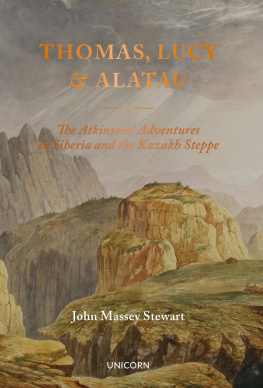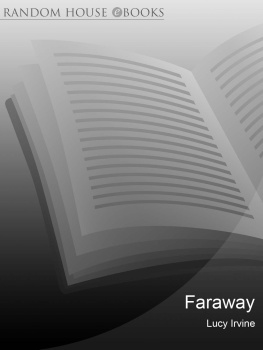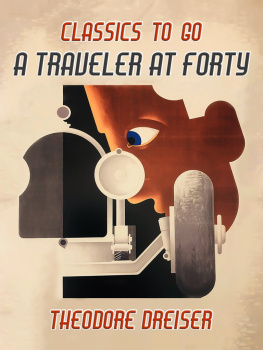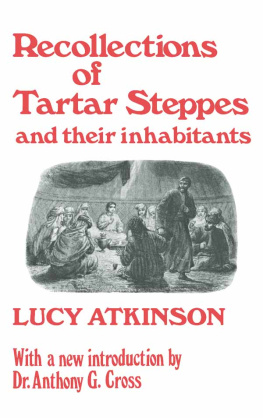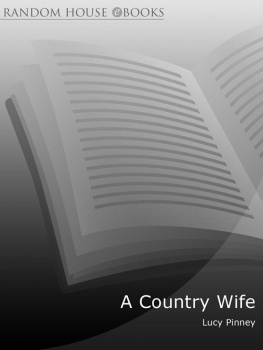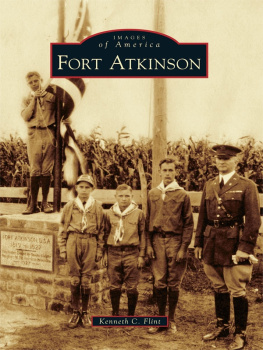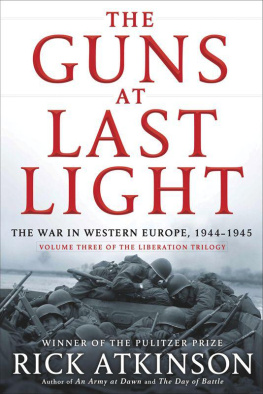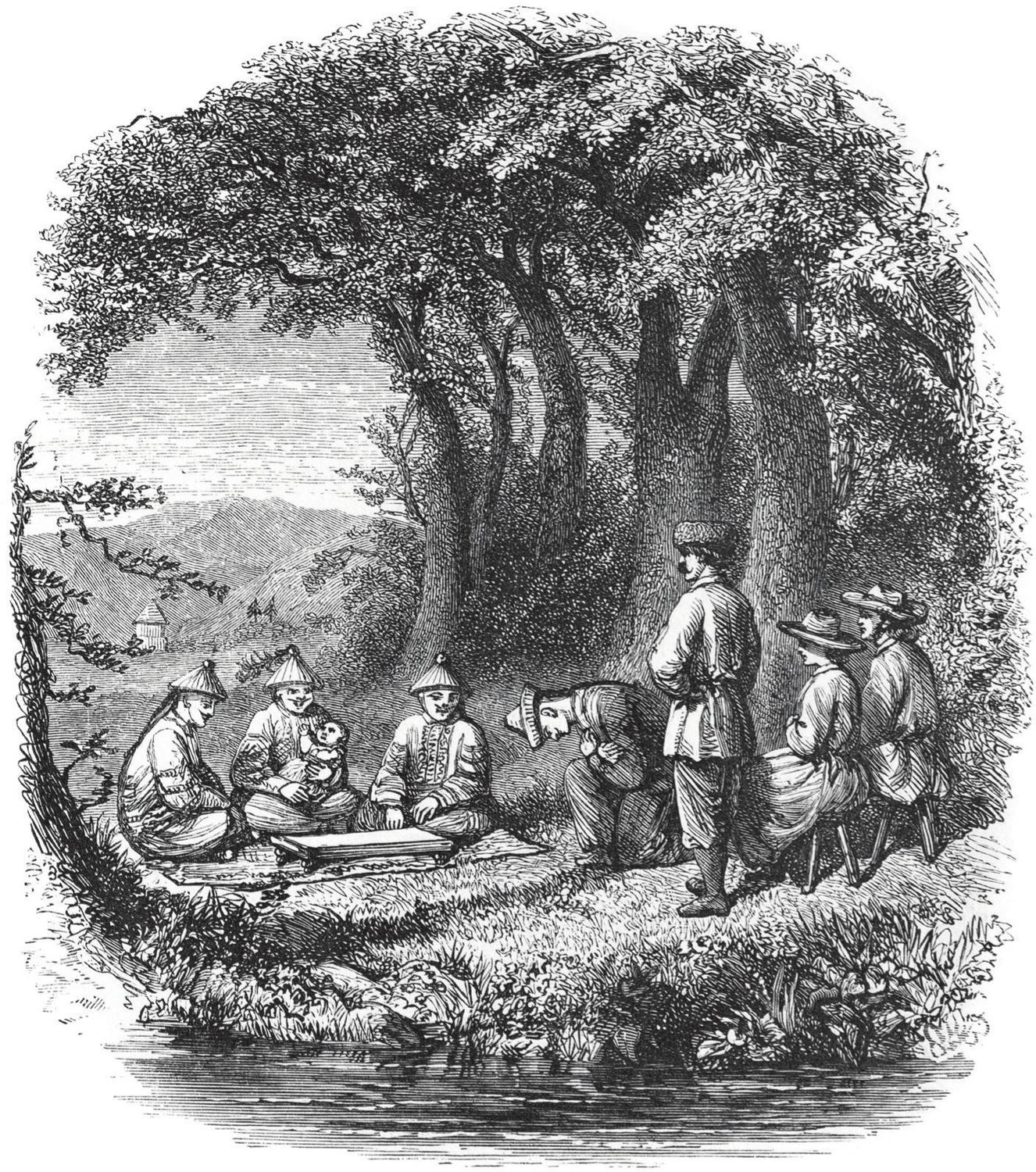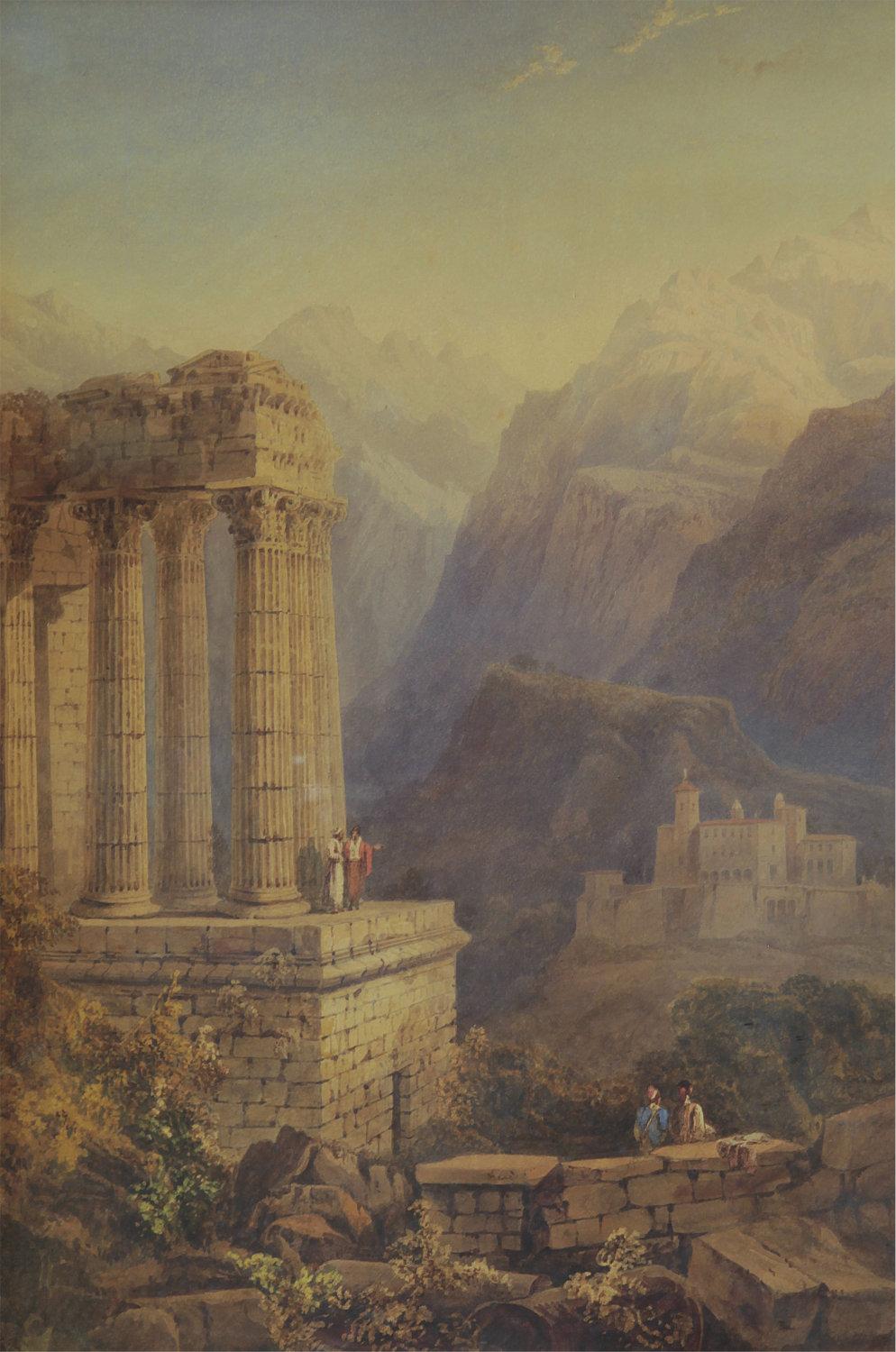Prologue
England and Germany
W OLVES AND SNOWSTORMS , camels and unbearable desert heat; bandits, murder attempts and night raids by enemy tribes; precipices, dangerous rapids; convicts, Cossacks, nomads as well as balls and a fourteen-course dinner party for an archbishop: all this (and far, far more) was experienced in Thomas Witlam Atkinsons seven years travels with wife and infant son by foot, horse, sledge, carriage, boat and raft for nearly 40,000 miles in the remoter parts of the Russian Empire, resulting in 560 watercolour sketches and fame as the Siberian traveller.
It had all begun in the year 1846 when a forty-seven-year-old, humbly-born Yorkshireman, stonemason and architect wrote the following letter:
To His Imperial Majesty Nicholas the First, Emperor of All the Russias
Sire,
The encouragement which your Imperial Majesty has always extended to Art and Science induces me to petition for your gracious permission to visit a province of Your Imperial Majestys Mighty Empire, The Pictorial features of which have not yet been much developed.
It has been suggested to me by Baron Humboldt [the famous scientist, explorer and geographer] that the Ural and Altai mountains would supply numerous and most interesting subjects for my pencil.
I am induced to hope that my great experience in sketching and painting would enable me to bring back a vast mass of Materials that would illustrate these portions of your Imperial Majestys Empire. As I should be accompanied by a gentleman who has devoted much time to Geology he would take notes of the Geological features of the Country and thus I wish render our united labours of great value.
Permit me Sire in profound deference to solicit permission to lay before Your Imperial Majesty my drawings of India, Egypt, Greece as a proof of my competence for such an undertaking.
With sentiments of Profound respect for your Imperial Majesty I subscribe myself
Sire,
Your Imperial Majestys most devoted and most faithful servant
T.W. Atkinson St Petersburg 19 August 1846
This is the extraordinary story of a village lad born a little over two hundred years ago who rose from nothing to being a successful architect, gave up all to travel with a passport granted by Tsar Nicholas I for remote parts of the Urals, Siberia and what is now Kazakhstan, returning with hundreds of watercolour sketches now mostly lost, of the books he wrote and the fame he won and his descent into near-oblivion today. It is a story too of his indomitable wife, Lucy, and of what became of her and of their son, Alatau Tamchiboulac Atkinson, born in a remote Cossack fort, and his own significant career in Hawaii. It is a story of a talented and ambitious self-made man, of determination, endurance, narrow escapes from death and love. It is a story that includes many famous people both in England and Russia, embracing Queen Victoria and two Tsars, Palmerston, Charles Dickens, Livingstone and the famous Decembrist exiles. But it is a story too of the conflicting demands of artistry and reputation on the one side and fidelity on the other.

The village of Cawthorne, mentioned in Domesday Book, lies on a hillside in the lee of the Pennines. At the end of the eighteenth century most of the 1,000-odd inhabitants were labourers working on the land or in some trade, and the quiet, middle-class village of today (bypassed now but then on the main turnpike road from Manchester to Barnsley) is bereft of those earlier coal and ironstone mines, tanneries, mills and smithies and their bustle. Built of the local grey stone, the village was basically part of the Cannon Hall estate owned by the Spencer Stanhope family, and the eighteenth-century mansion set in a rolling, landscaped parkland lies half a mile from the village. Head mason on the estate then was a widower, William Atkinson, who fell in love with and married a housemaid in the big house, Martha Witlam. To them was born on 6 March 1799, in their two-up two-down next to what was then the Wesleyan chapel, a son, Thomas.
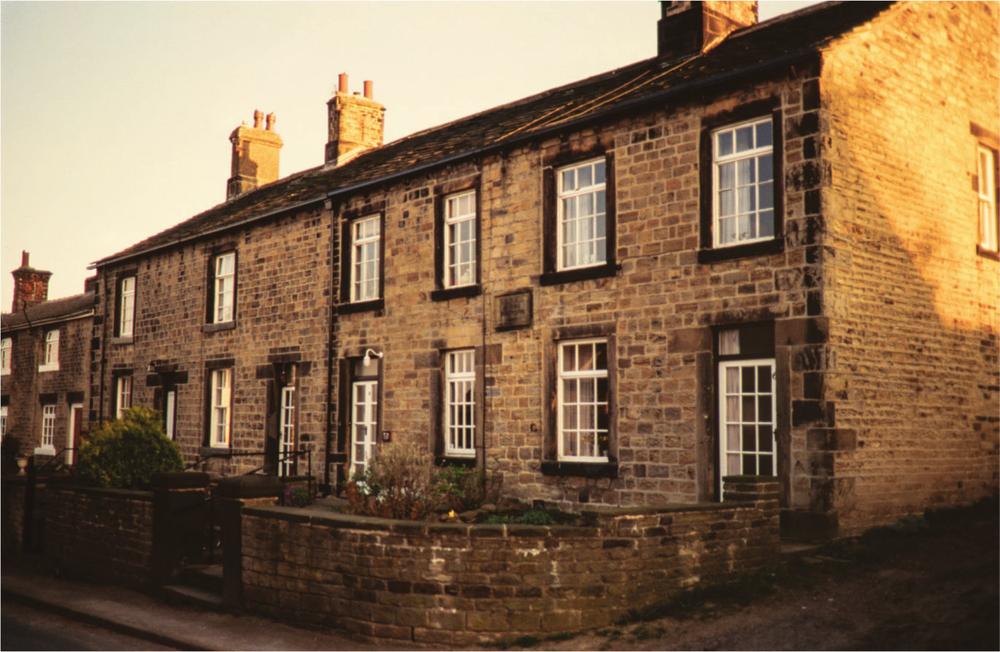
Thomass birthplace, Cawthorne
Thomas was born in one of these two end houses in 1799. Next door was a Wesleyan chapel, but it is not known which was which.
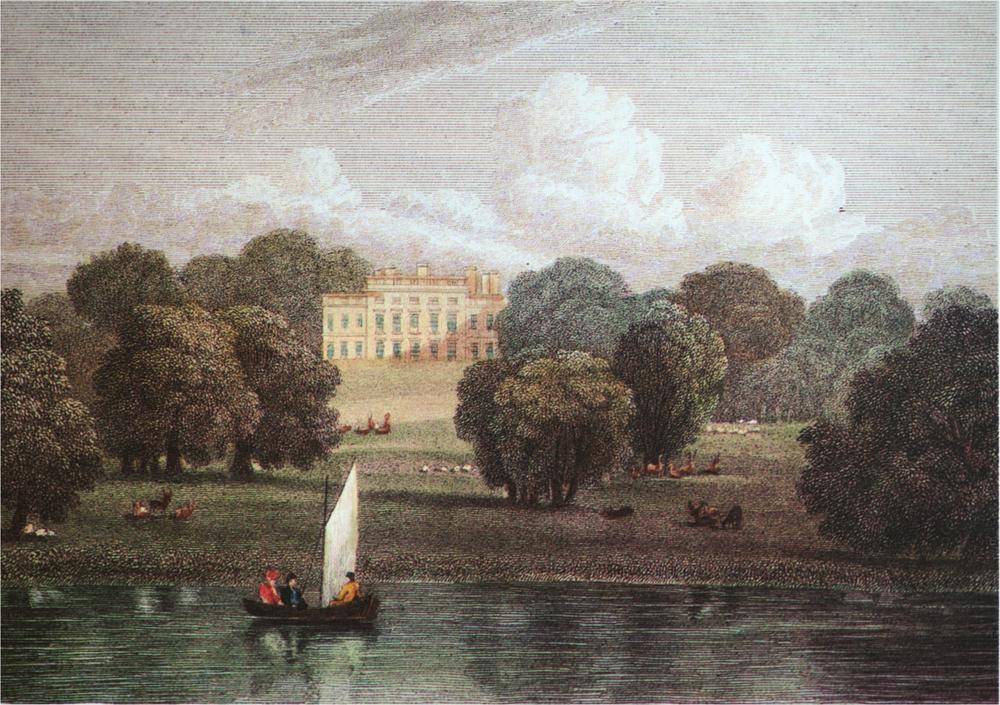
Cannon Hall, Cawthorne, Yorkshire
The home of the Spencer Stanhope family, who owned most of Cawthorne. John Spencer Stanhope, the squire, and his younger brother Charles had a major impact on Thomas, who in 1860 stayed as an honoured guest where he had once been a labourer.
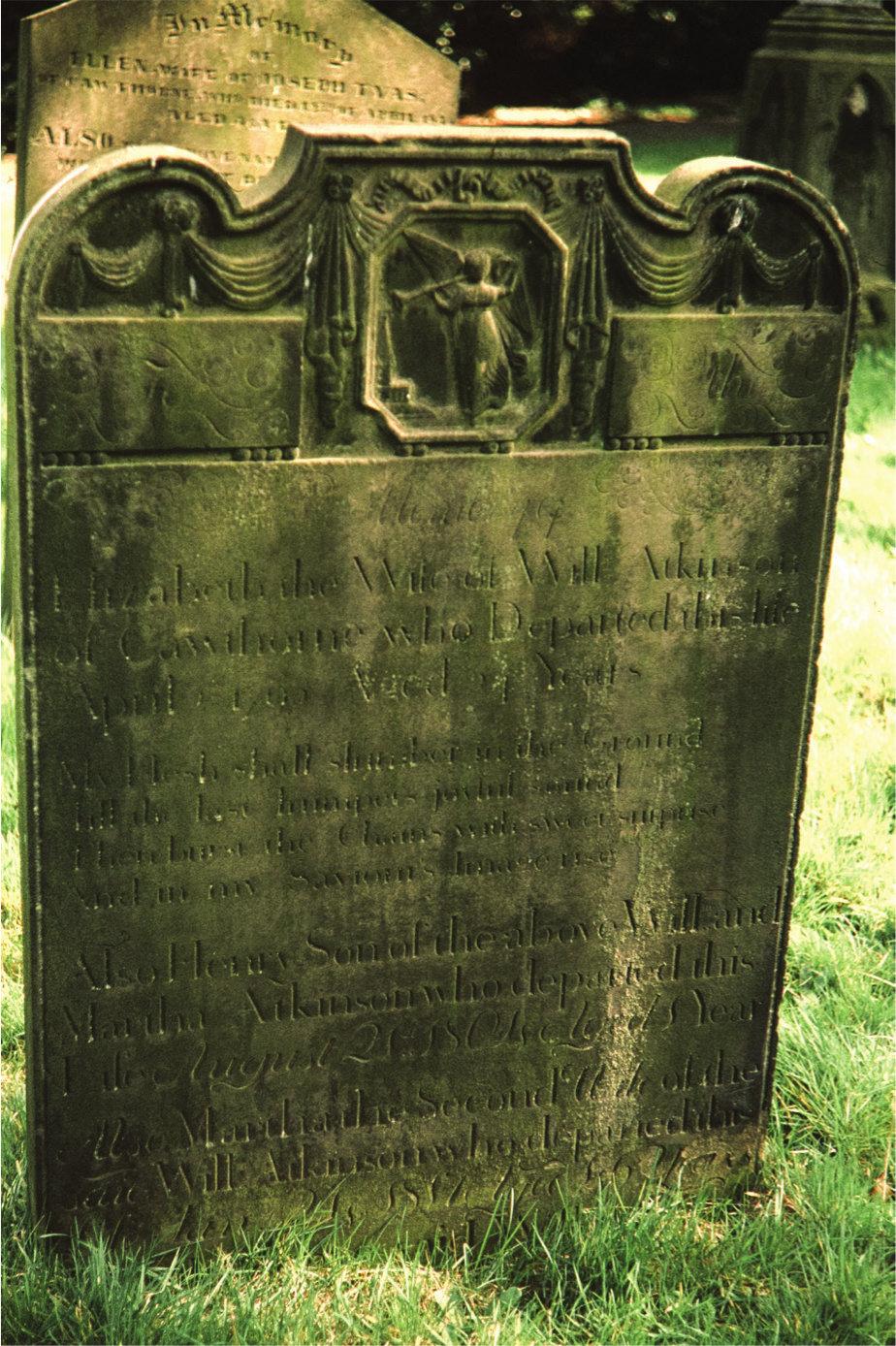
Headstone, St Marys churchyard, Cawthorne
As a young man Thomas designed and cut this fine headstone to his parents and his fathers first wife. It was this first example of his talent that led to his executing the altar tomb in the adjoining church.
He was the first child of their marriage (a second son, Henry, died aged only a year old), and there were two later daughters, Ellen and Anne. Tom Atkinson, as his schoolfellows called him only in adulthood did he add his mothers maiden name often took part in boyish escapades as well as in the village sports, which he greatly enjoyed.
From the age of ten his father took him from school in the summer months to act as his labourer, probably in a quarry on the estate. The boys innate intelligence luckily made up for this interrupted education, and the journals he was to write on his adult travels are both well-expressed and literate, bar some idiosyncratic punctuation and spellings (here retained). And he would at least have learnt from his father how to cut stone fundamental to his upward progress. In the winter, however, he continued his schooling and, fortunately, his elder half-brother, Charles, who had been to a good school in Sheffield, gave the young Tom lessons in writing and drawing, and he soon displayed great proficiency. Furthermore, at about this time he was given
Continuing to assist his father, he steadily acquired a stonemasons skills. In 1817, when he was eighteen, his mother died, aged forty-six. His father was to live another nine years, dying at fifty-six, according to the fine headstone at Cawthorne considered at the time as a very creditable performance which the young Atkinson cut in memory of his parents and his fathers first wife.

